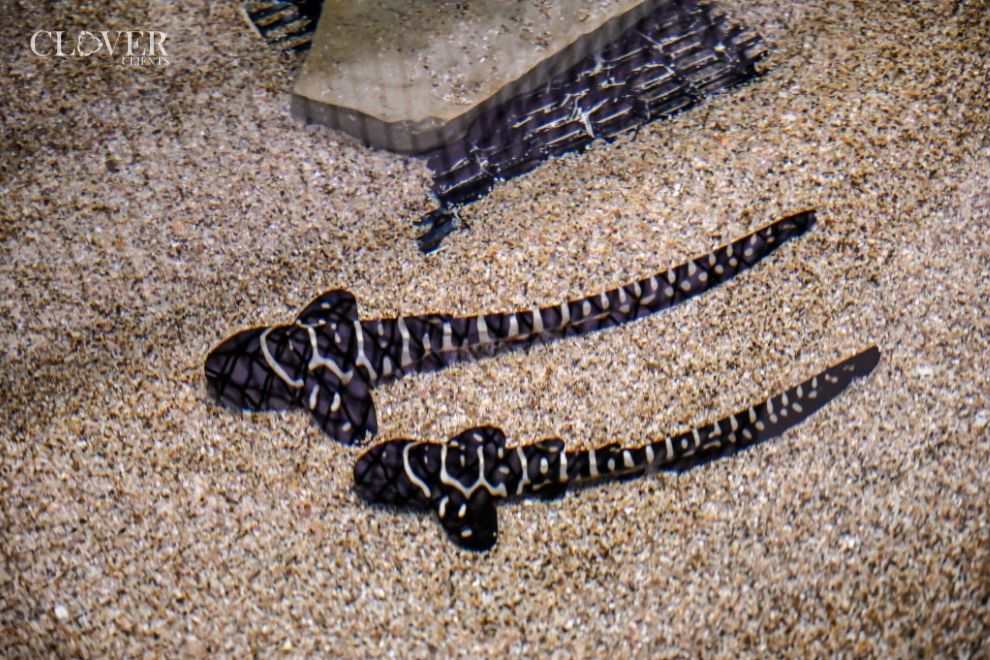A rewilding project is working to save endangered zebra sharks. The project is sending eggs from aquarium sharks over 12,000 kilometers to nurseries in Raja Ampat.
Hatching and Growth
After hatching, the young sharks are kept in tanks. They stay in these tanks until they are strong enough to be released into the wild.
Researchers aim to release 500 zebra sharks into the wild within 10 years. This effort supports a large, genetically diverse breeding population.
A survey estimated only 20 zebra sharks remain in the Raja Ampat archipelago. This makes the species functionally extinct in the region.
Zebra Sharks in Las Vegas
RAJA AMPAT, Indonesia — Nearly a million people visit the Shark Reef Aquarium in Las Vegas annually. They may see zebra sharks among over 15 shark species.
In 2023, eggs from these aquarium sharks were shipped to Raja Ampat. This archipelago is located in eastern Indonesia.
Two sharks recently hatched, named Buddy and Marshal. Both are being kept in a nursery on the island of Kri.
Enhancing Supportive Environment
The Raja Ampat Research and Conservation Centre (RARCC) hosts the nursery. This nonprofit, part of Papua Diving, ensures the sharks are fed and cared for.
Moreover, Mongabay visits the hatchery in January. The juvenile sharks were in separate tanks and fed daily with natural food until they could be released.
The StAR Project
The shark rewilding project, called StAR (Stegostoma tigrinum Augmentation and Recovery), focuses on restoring zebra shark populations to their natural habitat.
“This is the first-ever project to translocate sharks from aquariums to the wild,” said Maryrose Tapilatu. She manages the RARCC hatchery.
The goal is to release 500 zebra sharks into the wild within 10 years. Nesha Ichida, a marine conservation scientist, oversees the StAR Project.
Global Collaboration
StAR Project is the first under ReShark, a global coalition. Over 90 organizations, aquariums, and agencies are working together to recover threatened sharks and rays.
Nesha expects enough shark pups to grow into a large, genetically diverse population. This will maintain the balance of prey populations and support coral reef health.
Success in Raja Ampat could serve as a model for reestablishing endangered species. It shows how devastated marine ecosystems can recover and avoid extinction.
A Source of Pride
“It’s a big pride for Indonesia to have this project,” Nesha said. She shared her thoughts with ABC RN’s Saturday Extra.
Zebra sharks are found throughout the tropical Indo-Pacific. They are best known for their distinctive stripes and spots.
Young zebra sharks have yellowish stripes that mimic poisonous sea snakes. This pattern helps protect them from predators.
Their powerful tail can be nearly as long as their body. Laura Simmons from SEA LIFE Sydney Aquarium called zebra sharks a “striking, beautiful species.”
Conservation Challenges
Maryrose has not seen an adult zebra shark in the wild. This highlights the urgency of the rewilding project.
The zebra shark is functionally extinct in Raja Ampat. While a few individuals remain, their population cannot sustain itself.
Preventing Extinction
The IUCN estimates at least 200 sharks are needed to avoid extinction. Larger populations, around 2,000 individuals, are ideal for maintaining evolutionary potential.












